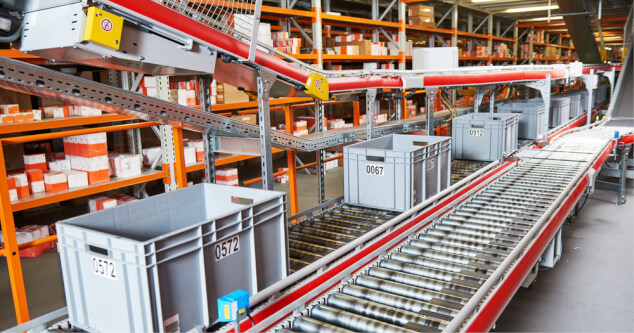Transforming Logistics with Automation: Meeting Diverse Client Demands
Published on 05 June, 2024 in Operational Excellence
The Demand for Diverse Services
The logistics landscape is evolving, with clients increasingly expecting comprehensive services, including personalised, customised, and seasonal packaging alongside various value-added services.
Personalised Packaging:
Consumers now want products that meet their exact specifications. This trend spans from everyday items to luxury goods, making it challenging to ensure the correct product is paired with the appropriate personalised packaging. The personalised packaging market is growing at over 5% annually. Surveys indicate that over half of consumers are more likely to repurchase from a vendor if they receive a product in personalised packaging.
Customised Packaging:
Customised packaging caters to specific client branding requirements to appeal to particular market segments, such as bulk-to-brand packaging in the retail sector for products like instant coffee, baby formula, or sealed foods. This often necessitates batch runs, which can be inefficient for manufacturers. Market research by Nielsen shows that 55% of consumers are willing to pay more for products designed for their segment or demographic group.
Seasonal Packaging:
Seasonal packaging significantly influences consumer buying decisions. A survey by the Paper and Packaging Board found that 44% of consumers say festive packaging increases their excitement about a product. Additionally, 60% of consumers are likely to share pictures of seasonally packaged products on social media, enhancing brand visibility and engagement.
Many clients now request value-added services, including co-packing, labelling, and other enhancements that prepare the product for the consumer market.

Impact on Third-Party Logistics Providers
Meeting these diverse demands imposes significant financial and operational burdens on third-party logistics (3PL) providers.
Increased Costs:
The demand for personalised and customised packaging requires more labour, driving up staffing costs. Since 2010, logistics costs have risen by around 5 percentage points due to increasing complexity and labour shortages. Post-pandemic wages in transport and logistics have increased four times compared to pre-pandemic levels.
Furthermore, to meet client demands, 3PLs must invest in additional infrastructure, such as advanced technology and automation systems, to handle complex packaging requirements. Interestingly, what many thought would be an inevitable increase in the cost of warehouse space due to shortages has now reversed. This year, significant overcapacity has emerged, with vacancy rates over 10% in some areas. This dramatic fluctuation highlights the need for flexible infrastructure investments to navigate these changes effectively.
Revenue and Contract Risks:
Failure to meet client demands can lead to significant revenue losses. Inability to provide the required packaging services may result in triggering penalty clauses and losing both current and future fulfilment contracts. Additionally, poor service quality due to manual errors in personalised and customised packaging can harm a 3PL's reputation, leading to loss of brand equity and client trust.
3PLs that successfully implement automation can mitigate these risks by improving efficiency and reducing reliance on manual labour. Automation can help manage the complexities of modern logistics, ensuring high-quality service and customer satisfaction.
Automated Solutions for Flexibility
Automation is the key to overcoming these challenges and meeting diverse client demands efficiently whilst providing the necessary flexibility around current and future SKUs with frequent changes and variable run cycles. Here’s how automation can transform logistics operations:
Robotics for Bespoke Packaging:
Robotics systems can handle the picking and placing of products into standardised receptacles, offering flexibility to quickly change from one pack format to another. This is particularly useful for packing chocolates, where pack formats can vary widely. Robotics ensures consistent, accurate, and flexible packing throughout the entire shift.
Vision Systems for Quality Control:
Vision systems maintain high accuracy in packaging, reducing errors and ensuring consistent quality. They can store a vast array of pack types and use high-speed code reading technology to verify that the right product is in the right pack. Storing image data also allows for quality verification of entire batch runs, which is crucial for discerning clients.
Automated Material Handling:
Addressing the labour shortage issue, Autonomous Mobile Robots (AMRs) can free up human capacity by moving goods around the warehouse, eliminating inefficiencies and bottlenecks. AMRs can also deliver packing materials just in time and even remove waste, reducing the need for manual intervention.
To deliver such flexibility, there must be a clear return on investment. The ability to redeploy certain technologies quickly and easily lowers risk, but key to success is creating long-term partnerships between manufacturers and logistics providers. This ensures flexible infrastructure delivers for both parties, securing continuity for a defined period.
Conclusion
In the ever-changing world of logistics, meeting diverse client demands is essential for maintaining competitiveness. Automation offers a powerful solution to this challenge, enabling logistics providers to offer high-quality, customised, and seasonal packaging services efficiently. By embracing automation, companies can improve operational efficiency, reduce costs, and deliver better value to their clients and consumers. As the logistics landscape continues to evolve, adopting automated solutions will be crucial for long-term success.
